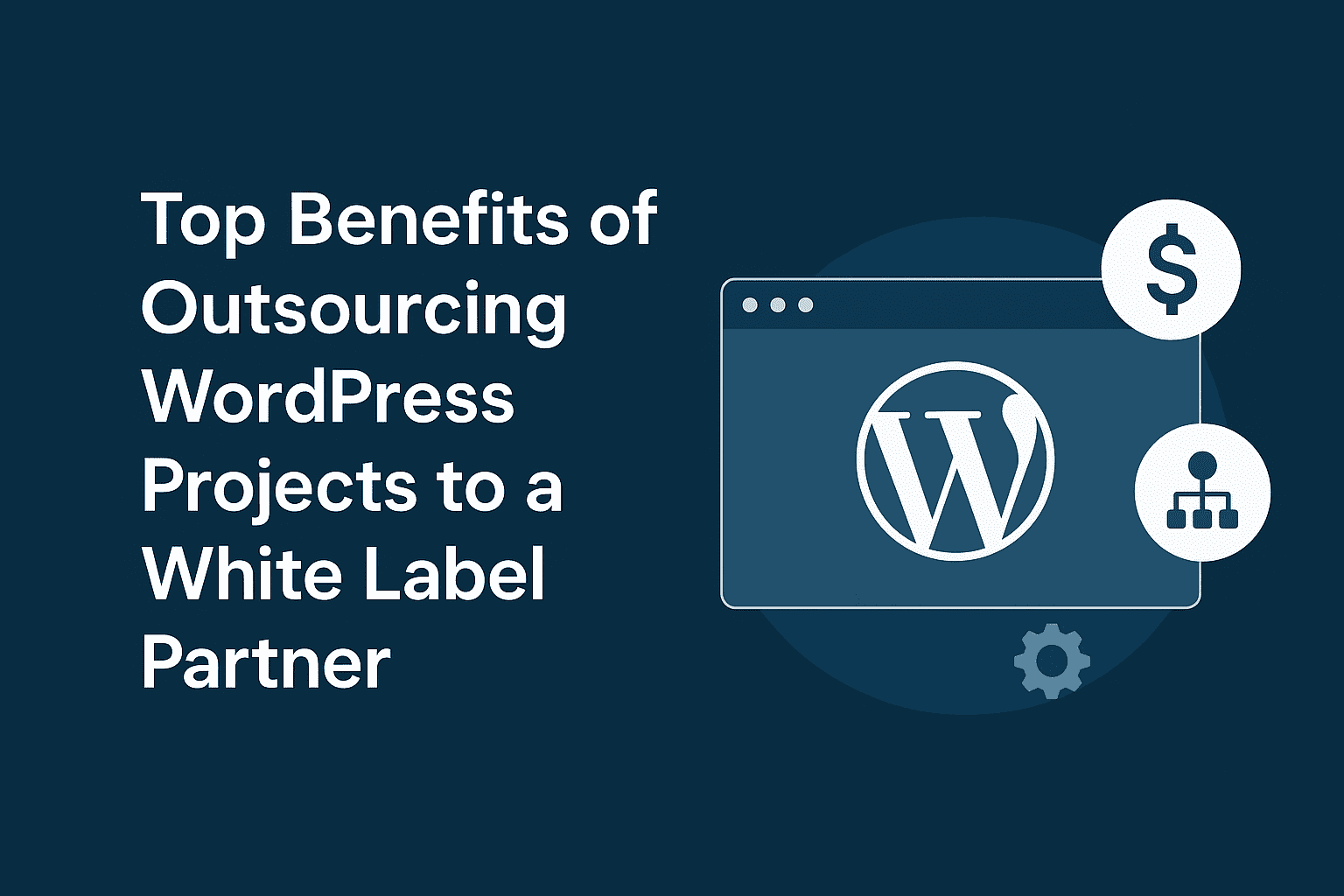In 2025, WordPress powers over 43% of all websites on the internet — making it both a dominant platform and a high-value target for cyber threats. While WordPress has evolved to support enterprise-grade capabilities, the need for integrated security practices within development and operations has become critical.
This is where DevSecOps — the fusion of Development (Dev), Security (Sec), and Operations (Ops) — comes in. For digital agencies and enterprises managing multiple WordPress sites, implementing DevSecOps transforms security from an afterthought into a built-in process across the full lifecycle.
🔐 What Is DevSecOps in the WordPress Context?
Traditionally, WordPress projects follow a “launch-then-secure” mindset — developers code, deploy, then install plugins for protection. But DevSecOps turns that model upside down.
It integrates security at every stage:
-
During development: secure coding, dependency checks
-
During build & deployment: automated vulnerability scans
-
During operations: continuous monitoring and threat intelligence
For agencies running multiple client websites or SaaS products built on WordPress, DevSecOps ensures security consistency, scalability, and compliance.
🧩 Why DevSecOps Matters for WordPress at Scale
1. Rising Attack Surface
Every plugin, theme, or integration increases the potential for vulnerabilities. In large ecosystems (agencies managing 100+ sites), manual security is impossible.
2. Automation & Continuous Integration
With CI/CD pipelines, agencies can automate:
-
Code linting and dependency checks
-
Plugin vulnerability scans
-
Automated deployment to staging and production
3. Regulatory Compliance
Enterprises often need to comply with frameworks like GDPR, ISO 27001, or SOC 2. DevSecOps helps maintain audit trails and ensures secure configurations by default.
🧰 Core Components of a WordPress DevSecOps Pipeline
Let’s break down how a full-stack WordPress development pipeline integrates DevSecOps principles.
1. Secure Local Development
Start with a containerized or isolated environment using tools like:
-
DevKinsta, LocalWP, or Docker
-
Keep environment variables (API keys, DB passwords) in
.envfiles -
Scan dependencies with tools like npm audit and Composer audit
2. Static Code Analysis
Before committing code, automatically check for:
-
Insecure PHP functions (
eval,base64_decode, etc.) -
XSS or SQL injection risks
-
Unsafe file permissions
Use:
-
SonarQube or CodeQL for PHP static analysis
-
WPScan CLI to check plugin/theme vulnerabilities
3. CI/CD Automation
Example stack:
-
GitHub Actions, Bitbucket Pipelines, or GitLab CI
-
Auto-deploy to staging → run tests → push to production only if checks pass
-
Integrate security scanning as part of CI (using WPScan, Trivy, etc.)
4. Infrastructure as Code (IaC)
For agencies deploying across AWS, Google Cloud, or Kinsta:
-
Use Terraform or Ansible to define secure infrastructure
-
Automate SSL, firewall, and IAM configurations
-
Avoid manual edits in production servers
5. Container Security
When using Dockerized WordPress:
-
Scan base images for vulnerabilities
-
Use non-root containers
-
Update images automatically with watchtower tools
🔄 Continuous Monitoring and Threat Detection
After deployment, real-time monitoring is essential:
-
Use Wordfence, Patchstack, or Sucuri CloudProxy for firewall & malware scanning
-
Integrate with ELK Stack or Grafana for log visualization
-
Set up alerts for file changes, brute-force attacks, and unauthorized admin logins
For enterprises, link your logs to SIEM systems like Splunk or Microsoft Sentinel for centralized monitoring.
🧪 Security Testing Automation
Security testing shouldn’t rely on human review alone. Introduce automation in:
| Type | Tools | Description |
|---|---|---|
| Static Application Security Testing (SAST) | SonarQube, CodeQL | Analyzes code before running |
| Dynamic Application Security Testing (DAST) | OWASP ZAP, Burp Suite | Tests a running site for vulnerabilities |
| Dependency Scanning | WPScan, Trivy | Detects outdated plugins or libraries |
| Penetration Testing | Kali Linux, Nessus | Advanced manual and automated testing |
Integrate these into your pipeline for continuous feedback loops.
🧠 DevSecOps Best Practices for Agencies
-
Use Role-Based Access Control (RBAC)
Only give developers the minimum permissions required.
Example: Editors shouldn’t access deployment settings. -
Enforce Secrets Management
Never hard-code API keys in your codebase.
Use tools like Vault, AWS Secrets Manager, or Bitwarden Teams. -
Regular Plugin Audits
-
Remove unused plugins/themes
-
Replace outdated ones with maintained alternatives
-
Always test updates in staging before pushing live
-
-
Automate Backups & Recovery
Backups should run hourly or daily with versioning.
Store them securely in offsite systems like AWS S3 or Backblaze B2. -
Patch Management
Create a schedule to patch PHP versions, WordPress core, and dependencies weekly.
🏗️ Scaling WordPress Security for Enterprise Environments
When managing dozens or hundreds of WordPress sites, scalability is key.
🔹 Use Centralized Management
Tools like MainWP, ManageWP, or InfiniteWP allow:
-
Bulk updates and backups
-
Centralized security scans
-
Plugin version control
🔹 Adopt Multi-Environment Workflows
Have clear separation between:
-
Development
-
Staging
-
Production
Automate deployments through CI/CD and enforce testing before production pushes.
🔹 Infrastructure Security Layers
-
Use Web Application Firewalls (WAF) like Cloudflare or Sucuri
-
Add rate limiting and geo-blocking
-
Deploy behind a reverse proxy with load balancing
🧭 Building a Security-First Culture
DevSecOps isn’t only about tools — it’s about mindset.
Encourage developers to:
-
Treat security bugs as production bugs
-
Conduct peer reviews focusing on security risks
-
Include security metrics in project KPIs
Regularly train your team on new threat vectors and WordPress vulnerabilities.
⚙️ Future of WordPress DevSecOps (2025 & Beyond)
In 2025 and beyond, we’ll see more:
-
AI-driven vulnerability detection integrated with CI/CD tools
-
Zero-trust architectures in WordPress hosting
-
Blockchain-based plugin verification for authenticity
-
Serverless WordPress deployments for isolated micro-environments
As automation matures, agencies that master DevSecOps will deliver faster, safer, and more compliant digital solutions.
🚀 Conclusion
Security is no longer optional — it’s an essential part of delivering quality WordPress solutions at scale.
By integrating DevSecOps principles, agencies and enterprises can ensure:
-
Continuous protection
-
Faster release cycles
-
Greater client trust
In 2025, the most successful WordPress agencies won’t just build — they’ll build securely by design.



